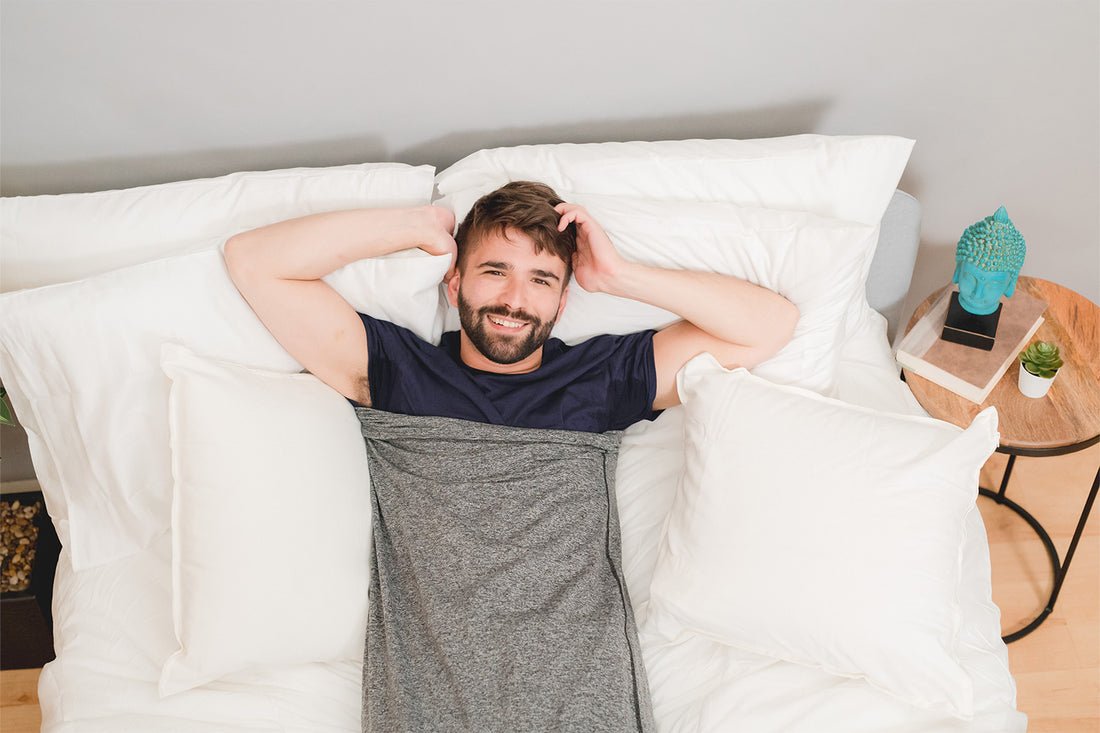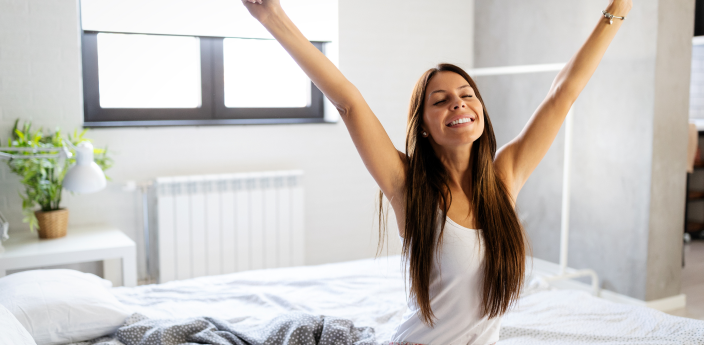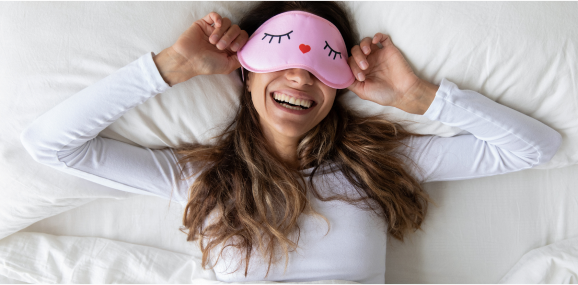It’s bedtime once again.
Lights go out, head and pillow meet, and eyelids close like a curtain on the world. Sleep has come and all the cares of the world are lost in dreamland.
We all wish falling asleep was that easy and that the process was that seamless. While it is true that some people are seemingly zonked out once their head hits a pillow, it is not true for most of us.
But how long should it take you to fall asleep? Five minutes? Half an hour? Some nights are better than others when it comes to sleep, but is sleep latency really that important?
Healthy Sleep is Essential
Getting good quality sleep is essential for both body and mind. Healthy sleep patterns help keep our body’s strong and our minds sharp.
In short, healthy sleep is imperative for good health.
In fact, numerous sleep research studies have shown just how important sleep is for our health and the detrimental effects that inadequate sleep can pose.
Restful sleep relies on healthy patterns being in place. Here are a few things to consider when it comes to healthy sleep:
- Sleep duration – Most sleep experts recommend that adults aim for 7 to 9 hours of sleep per night.
- Sleep continuity – Quality sleep is also continuous sleep, which involves sleeping through the night with minimal disruptions.
But what about the actual process of falling asleep — how long should it take?
A Quick Look at Sleep Latency
Falling asleep looks different for everyone. Some have a specific routine that must be followed before the sheep can be counted, others seem to be able to fall asleep anywhere and in any position without any trouble.
The fancy term for the length of time it takes to fall asleep is known as sleep latency, or sleep onset latency.
It is one of the most important parameters in sleep studies.
It is the time, in minutes, from lights out to sleep. In studies, it is confirmed through brain wave measurements, or electroencephalography (EEG).
Most people differ in the amount of time it takes to actually fall asleep, but average sleep latency is generally somewhere between 10 and 20 minutes for healthy adults.
Sleep Latency and Sleep Efficiency
It is hard to accurately estimate the time it takes to fall asleep, however, most sleep experts tend to agree that 10 to 20 minutes is the sweet spot for sleep latency.
But we all have those nights. Sometimes we have nights when our brains don’t seem to want to turn off, other nights we are so exhausted that we don’t remember our heads hitting the pillow.
These occasional times when sleep latency is less than 10 minutes or longer than 20 minutes are not an issue. However, continuous issues with normal sleep latency can be problematic when it comes to sleep efficiency — the percentage of time we spend asleep in bed.
For example, if you spend eight hours in bed but are only asleep for six of them, your sleep efficiency would be around 75 percent. A percentage of 85 or more is considered normal.
Taking Too Long to Fall Asleep
If it is consistently taking you more than 20 minutes to fall asleep then there could be some underlying issues at play.
Here are some issues to consider:
- You’re going to bed too early.
- You have poor sleep hygiene routines.
- You’re experiencing stress and feelings of anxiety.
Disrupting the Circadian Rhythm
A common issue that keeps people from falling asleep in the normal time range is that they are going to sleep too early.
Trying to go to sleep too early can disrupt the body’s internal clock.
This “clock” is known as the circadian rhythm or the 24-hour cycles your body goes through, including the sleep-wake cycle.
The sleep-wake cycle is directly influenced by environmental factors like light. During the day, light exposure causes us to be awake and active. At nightfall, when light diminishes the hormone melatonin is produced to help promote sleepiness.
In short, the circadian rhythm helps align wakefulness and sleep with day and night. When it is in balance, restorative sleep is the result. However, things like irregular sleep patterns, jet lag, and shift work can disrupt this normal cycle.
Also, trying to hit the hay too early, especially when it’s still light out can throw off the sleep-wake cycle and make it harder to fall asleep once you get in bed.
Poor Sleep Hygiene and Habits
Good sleep hygiene involves healthy sleep habits. Trouble falling asleep can be the result of poor sleep routines and habits. For example, routinely drinking alcohol or caffeinated beverages before bed can definitely cause issues falling asleep.
An irregular sleep schedule can also contribute to problems when it comes to falling asleep. Also, the bedroom environment itself is important to overall quality of sleep. Distracting noises and too many lights make falling asleep tough.
Another bad habit at bedtime is electronics. Many people spend a lot of time (sometimes hours) lying in bed staring at a phone or computer screen. Unfortunately, these screens emit blue light, which has been shown to interfere with our natural sleep cycle.
Stress and Anxiety
Another culprit when it comes to sleep latency is stress and anxiety. The combination of stress and anxiety can leave us wide awake at night as the demands of the day seem to settle in our minds when we settle underneath the sheets.
This can be a vicious cycle. Stress and anxiety lead to sleep deprivation, sleep deprivation affects mood, more stress and anxiety arise, and the cycle continues.
Tips for Falling Asleep Faster
Sleep latency is different for everyone. But, if you do find yourself regularly taking 20 minutes or more to fall asleep at night there are some sleep hygiene tips that may help.
Good sleep starts with establishing healthy routines and sticking with them.
Start by making sure you go to sleep and wake up at the same times each day. This will help your body develop a consistent sleep-wake cycle.
You also need to establish a routine for winding down at night, typically an hour or so before bed. This could involve reading a book or listening to soothing music — anything that helps you relax before bed.
Here are some other things to consider when it comes to bedtime routines:
- Only use your bed for sleeping at night, try to eliminate daytime napping.
- Ensure your bedroom is cool, dark, and quiet.
- Avoid heavy meals, caffeine, and alcohol before bed.
- Limit the distractions; that may mean turning electronic screens off.
Exercise can also help. Making sure you are physically active during the day is crucial for how well you will sleep at night. Even 20 to 30 minutes of daily exercise can do wonders come bedtime.
If you still can’t seem to fall asleep after 20 minutes, it’s okay to press reset. Get up, find something relaxing to do for a bit and then try again once you feel yourself getting tired.
Don’t Forget About the Sleep Pod
There is just something calming about a warm hug or a heavy blanket. The gentle pressure gives us a feeling of contentment. Sleep Pod understands this and is specifically designed with better sleep in mind.
Using the proven therapy technique known as Deep Touch Pressure Stimulation (DTPS), the Sleep Pod helps reduce feelings of anxiety and aids in relaxation come bedtime.
This could make the difference for those who find themselves lying awake due to stress and anxiety.
The Sleep Pod’s unique cocoon-like shape and ultra-breathable four-way stretch material provides calming, gentle pressure throughout the night.
Conclusion
Falling asleep is easy for some and not so easy for others. The time it takes to fall asleep, or sleep latency, varies from person to person.
But, sleep latency can also be affected by many different factors, including things like poor sleep hygiene and habits as well as feelings of stress and anxiety.
Thankfully, establishing healthy bedtime habits can help. And if anxiety is making it hard to fall asleep, feel free to give the Sleep Pod a try.
Sources:
The Extraordinary Importance of Sleep | NIH
Sleep Latency - an overview | ScienceDirect Topics
What Determines our Sleep Efficiency? | Sleep Cycle
How Blue Light Affects Sleep | Sleep Foundation

































500,000+ happy customers